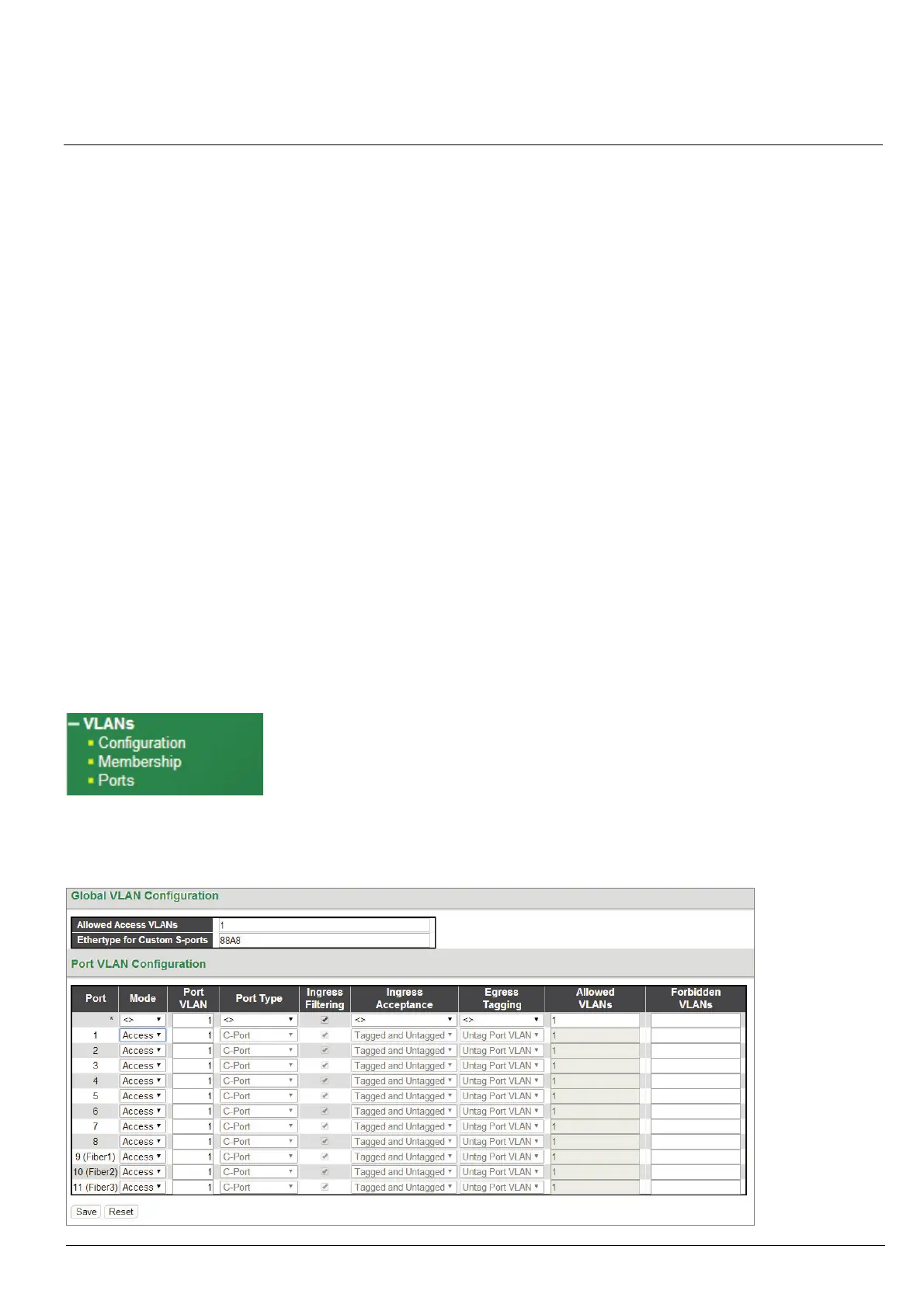HMG-838PT & HMG-838EPT Web Configuration 14-1
Chapter 14
VLANs
IEEE 802.1Q VLAN (Virtual Local Area Network) is a popular and cost-effectively way to segment your networking
deployment by logically grouping devices with similar attributes irrespective of their physical connections. VLANs also
segment the network into different broadcast domains so that packets are forwarded to ports within the VLAN that they
belong. Using VLANs provides the following main benefits:
VLANs provide extra security: Devices that frequently communicate with each other are grouped into the same VLAN. If
devices in a VLAN want to communicate with devices in a different VLAN, the traffic must go through a routing device or
Layer 3 switching device.
VLANs help control traffic: Traditionally, when networks are not segmented into VLANs, congestion can be easily
caused by broadcast traffic that is directed to all devices. To minimize the possibility of broadcast traffic damaging the
entire network, VLANs can help group devices that communicate frequently with other in the same VLAN so as to divide
the entire network into several broadcast domains.
VLANs make changes of devices or relocation more easily: In traditional networks, when moving a device
geographically to a new location (for example, move a device in floor 2 to floor 4), the network administrator may need
to change the IP or even subnet of the network or require re-cabling. However, by using VLANs, the original IP settings
can remain the same and re-cabling can be reduced to minimal.
The “VLAN” menu contains the following sub menus. Select the appropriate one to set up the detailed configurations.
14-1 Configuration
